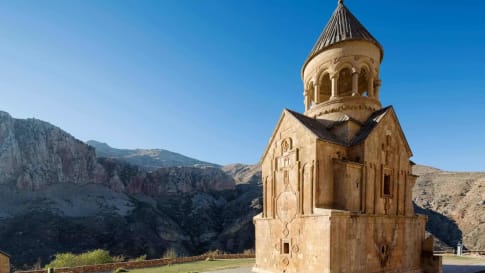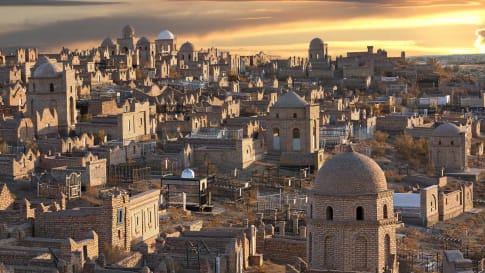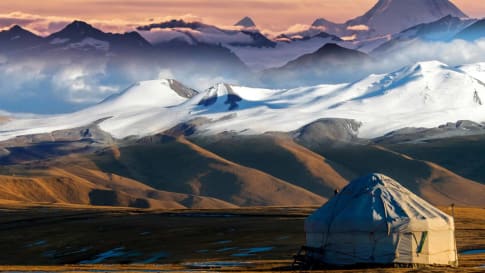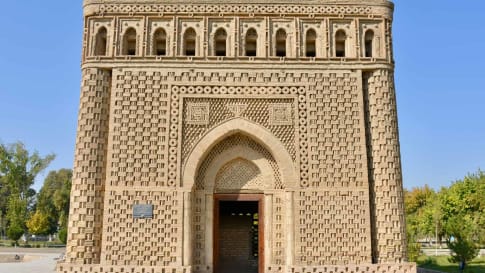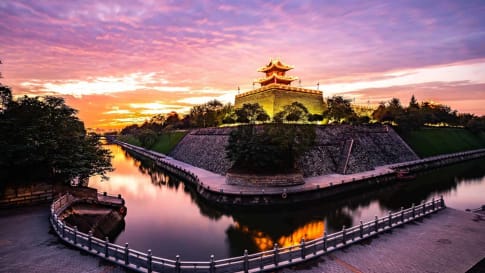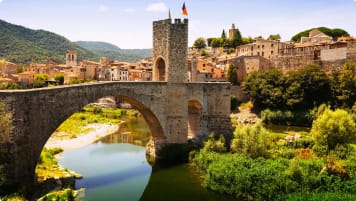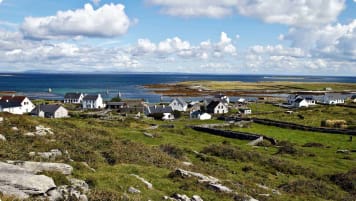Tajikistan Tour | Central Asian Small Group Tour
We explore the country’s astonishing scenery and monuments. Tajikistan is the smallest of the 5 ‘Stans and is also the most mountainous. On our small group tour for couples and solo travelers we encounter many ranges and mountain chains where we reach well over 3,000 metres above sea level while crossing passes.
From $3,271USD
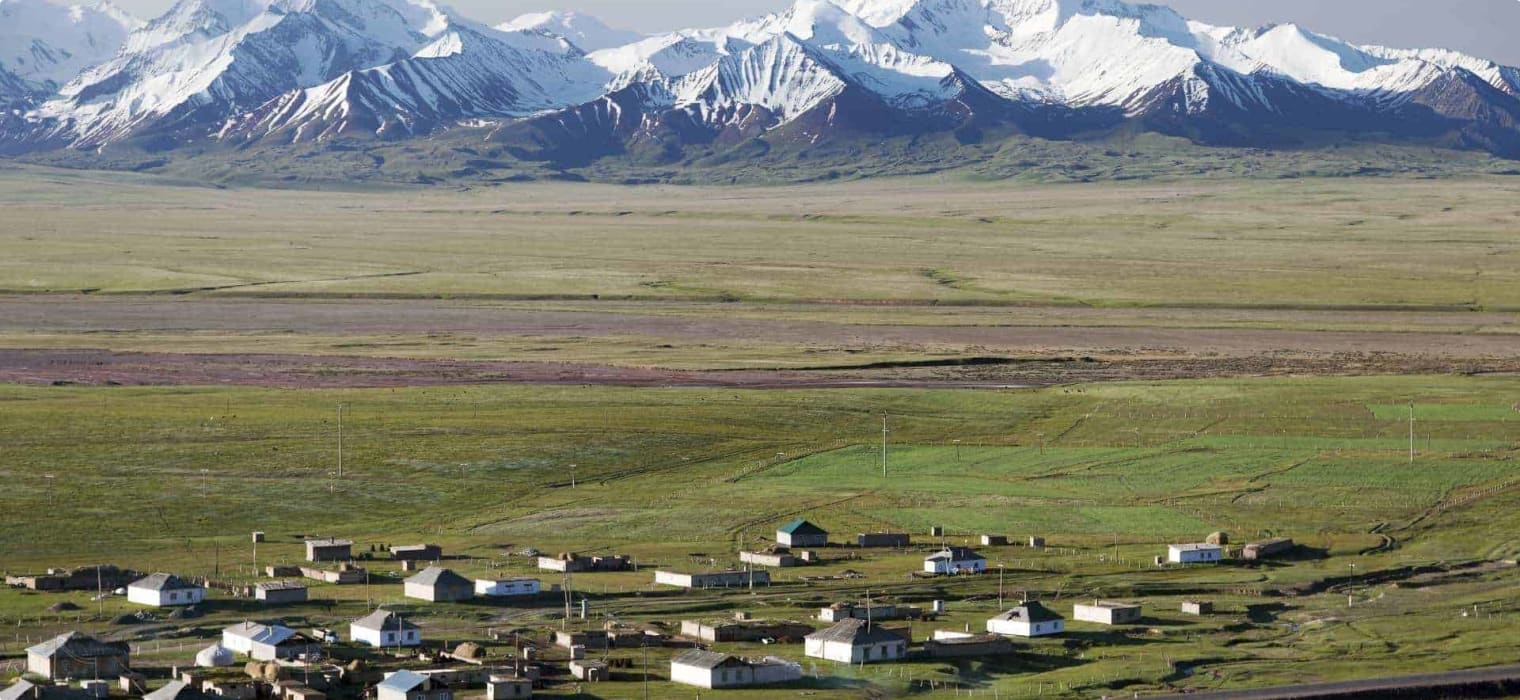
Highlights
- 1. Enjoy the extensive mountain scenery of Tajikistan as we cross the Zerafshan Mountains, the Fan Mountains, and the Turkestan Mountains.
- 2. Experience the capital Dushanbe and its Oriental Bazaar.
- 3. Travel through ranges where we reach well over 3,000 metres above sea level.
- 4. See a wide range of Tajik monuments ranging in age from the 1st to the 19th centuries.

Departure Dates
| Departure Date | Price |
|---|---|
| 20 June 2026 Ends 26 June 2026 • 7 days $3,271 Twin $4,131 Single Available | Selected |
| 12 September 2026 Ends 18 September 2026 • 7 days $3,271 Twin $4,131 Single Available | |
| 19 June 2027 Ends 25 June 2027 • 7 days $3,536 Twin $4,395 Single Available | |
| 11 September 2027 Ends 17 September 2027 • 7 days $3,536 Twin $4,395 Single Available |
Tajikistan | Small Group Tour
Odyssey offers easy, convenient, and relaxed escorted small group tours across Central Asia and beyond including Tajikistan. We explore Tajikistan's natural beauty, its ancient heritage, its World Heritage Sites, and famous cities, all with some truly spectacular scenery along the way. This and more is all waiting to be explored on one of Odyssey’s small group tours of Tajikistan, designed for the senior traveller, and led by experienced, and enthusiastic like minded people.
On this Tajikistan small group tour, we explore the Central Asian country's astonishing scenery and monuments, as well as its history and culture. Tajikistan is the smallest of the 5 'Stans and it is also the most mountainous, with 90% of land being upland. With incredible peaks scattered with villages and bright blue, shimmering lakes, Tajikistan is home to some of the most striking landscapes in Central Asia. On our tour, designed specifically for mature travellers to enjoy, we encounter remote communities and spectacular mountain ranges that reach well over 3,000 metres above sea level. This is one of the reasons Tajikistan is sometimes referred to as 'the Roof of the World'.
The country is set between China, Pakistan, Afghanistan, Uzbekistan, and Kyrgyzstan with the Uzbekistan border to the west and the Afghan border to south. Tajiks also lay claim to areas of Uzbekistan and Kyrgyzstan, which these countries reject.
The country remains economically poor by Western standards. A large percentage of the adult population work overseas, mainly in Russia, and many traditional village communities have struggled to adapt to a changing world. However, Tajiks are renowned for the hospitality and their unfailing cheerfulness despite the difficulties they might face. This is one the reasons, Tajikistan makes such a unique and fascinating travel experience.
One of the countries main resources is water, and although they cannot sell water, they do produce hydro-electricity for sale in neighbouring countries. This is seen as a future solution to a current lack of supplies of electricity in Tajikistan, particularly in its rural areas during winter. In the future, it is hoped that this hydro power will assist the long term economic development of the country.
Highlights of Odyssey Traveller's Tajikistan Tour
One of the highlights of this tour is the chance to see the amazing mountain ranges that make Tajikistan the unique travel destination it is. The north is home to the Trans-Alay range, while the east and centre are home to the Tien Shan (Turkestan Mountains). Finally, the southeast is occupied by the icy peaks of the Pamir Mountains. We will see these ranges on our tour and also some of the most magnificent alpine lakes, including Iskander Lake.
Near Iskander lake is Penjikent, home to the Museum of Rudaki, devoted to Abu Abdullah Rudaki, which you will also have the chance to explore. Rudaki, born in Penjikent in 885, is considered to be the ‘father of Persian poetry’ and a Tajik national hero. The museum’s scope is broader than that – make sure to visit the frescoes from the ancient city of Penjikent, depicting a banquet, a battle, and daily life scenes. Other archaeological remains include statues of Zoroastrian divinities and exhibits from Sarazm, a Neolithic site recently found nearby, including the richly decorated remains of a young woman believed to be the ‘princess of Sarazm.’
We will also visit the ruins of ancient Penjikent, which are preserved nearby. The city was founded by the Sogdians in the 5th century, but abandoned after the 8th century Arab conquest. Foundations of houses, a number of Zoroastrian fire temples, and the city bazaar are visible among the excavated ruins. We will spend time at the Museum of Archaeology and Fortification, which is in the middle of the northern part of Khodjent set within a 7th C to 8th C enclosed fortress. It was destroyed several times by various conquerors and the last reconstruction was in the 18th C. Khodjent is also home to the biggest oriental bazaar of Central Asia, known as the Payshanba Bazaar. This is sure to be one of the most interesting experiences of your trip, with the bazaar attracting all kinds of people with various languages and tastes.
Of course, we spend some time in the capital city, Dushanbe with a full day of sightseeing. This begins with the Tajikistan United Museum, which includes exhibits on history, natural history, and art, as well as a stroll around the city, which is framed by mountains.
Tourists who have made it to Tajikistan have commented that the hospitality of the Tajik people is one of the highlights any visit. Outside of Dushanbe, hotels are rare and tourists frequently homestay, giving an unparalleled insight into the traditional culture of the region. High mountains and valleys are home to remote towns where life has been largely untouched by the Soviets, or by the opening up of Tajikistan to the West.
There is an optional 23 day tour to Central Asia & the Stans prior to this tour. This program provides another incredible and compelling insight into this often misunderstood region. Odyssey's groups continually praise the friendliness of the local communities visited as well as their hospitality as you explore Tajikistan. You can learn more about Tajikistan with our country profile.
For more details about the Tajikistan small group tour please click the ‘Top 5’ or ‘Itinerary’ buttons above! If you’re keen to experience this tour, please call or send an email. Or, to book, simply fill in the form on the right hand side of this page.
Gallery
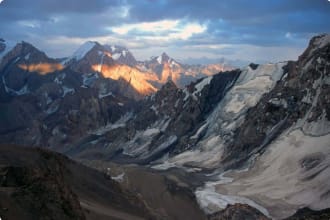
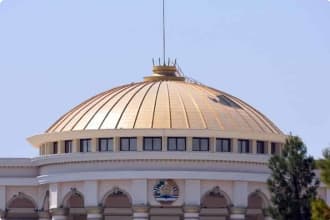
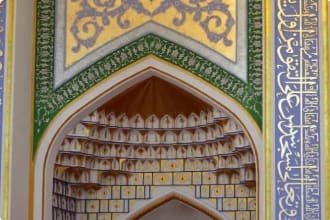

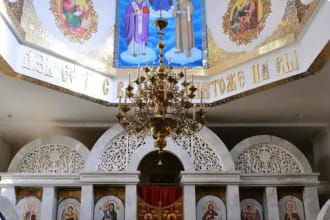
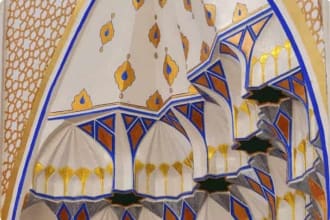

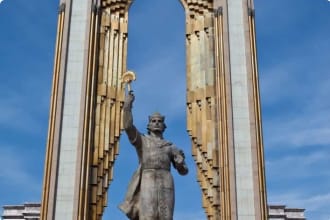
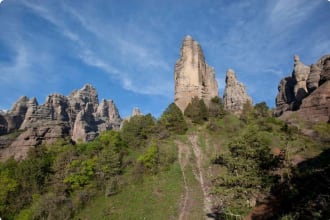
Itinerary
7 days
Day 1: Almaty
Accommodation: 1 night at Kazzhol Hotel or similar.
Upon arrival we will come to the hotel individually. Participants joining from the Stans Odyssey tour will be at the hotel from previous day.
Dinner will be at the hotel this evening.
(D)
Day 2: Dushanbe
Accommodation: 1 night at Serena Hotel or similar.
Following an early breakfast we’ll transfer to the airport for our flight to Dushanbe. On arrivel we’ll be met and enjoy a full day of sightseeing in Dushanbe beginning with the Tajikistan United Museum, which includes exhibits on history, natural history, and art. The statue of Buddha in Nirvana is one of the valuable exhibits of the museum. We then visit the Bazaar, an oriental market and the most crowded place in the city.
Day 3: Dushanbe – Penjikent
Accommodation: 2 nights at Penjikent Plaza or similar.
After an early breakfast we have a 250 kilometre drive north to Penjikent via the Anzob Pass, 3,373 metres above sea level. After passing over the Zerafshan Mountains we stop at Iskandar Lake in the Fan Mountains. Iskandar Kul, known as the Lake of Alexander the Great, was built as a reservoir in 1969.
Lunch is at a local restaurant, then we continue our drive on to Penjikent.
Dinner will be at our guest house.
(B,L,D)
Day 4: Penjikent - Haf Kul - Penjikent
Accommodation: Penjikent Hotel or similar.
Following breakfast we will visit the Museum of Rudaki, an important local site given that Penjikent is the birthplace of Abu Abdullah Rudaki, considered by many to be the father of Persian poetry.
We continue our sightseeing at Ancient Penjikent with the ruins of the old Sogdian town founded in 5th C but abandoned in the 8thC after the Arab conquest. Foundations of houses, a citadel with a couple of Zoroastrian fire temples, and the city bazaar are visible in the excavated ruins. We then drive to the Seven Lakes area to see 4 of these picturesque water bodies with different colors set in the mountains of Tajikistan, at just over 2,000 metres above sea level.
We have a picnic lunch at one of the lakes then drive back to Penjikent for some free time and dinner.
(B,L,D)
Day 5: Penjikent - Istaravshan - Khodjent
Accommodation: 1 night Parliament hotel or similar.
After breakfast and checkout we drive east to Khodjent via Istaravshan, a journey of about 230 kilometres.
Lunch is at a local house and followed by visits in Istaravshan, a well preserved town located at 3,378 metres in the Turkestan Mountains. Here we see Mug Tepa. Situated in Ura-Tube, it is one of the most ancient settlements in Tajikistan. We will see the Khazrati Shoh architectural complex from the 19th C, which consists of Khazrati Shoh mausoleum, the grave of brother of Kusam ibn Abbas, Khudayar Valami mausoleum, and mosque Namozgoh. The Bazaar completes our day. It is claimed this oriental market is a place where you can find everything.
We drive about 40 kilometres to Khodjent (Khojand) where we have dinner and overnight.
(B,L,D)
Day 6: Khodjent – Tashkent
Accommodation: 1 night at Lotte Hotel or similar.
After breakfast we have some local visits, then cross the border and complete the day with some sightseeing as we drive to our hotel in Tashkent.
Khodjent is on the Amu Darya river, and very close to its source in the Fergana Valley of Uzbekistan. We will visit the Museum of Archaeology and Fortification, which is in the middle of the northern part of the city set within a 7th C to 8th C enclosed fortress. It was destroyed several times by various conquerors and the last reconstruction was in the 18th C.
The biggest oriental bazaar of Central Asia is Payshanba bazaar, one of the most interesting places in Khodjent, attracting people with various languages and tastes. Lunch is at local restaurant and after lunch we drive to Tajik-Uzbek border at “Shirin.” From here we drive north to Tashkent for dinner and overnight.
(B,L,D)
Day 7: Tashkent
The tour ends after breakfast.
Tour Notes
- This tour can be taken in conjunction with Central Asia & The Stans.
- Group size is limited to a maximum of 15 participants.
Includes / Excludes
What’s included in our Tour
- 6 nights of accommodation, including breakfast daily.
- Lunches and dinners as specified.
- Transport and field trips as indicated.
- Applicable entry fees and services of local guides.
- Services of a Tour Leader.
- Detailed tour information booklet.
- Service charges and gratuities.
What’s not included in our Tour
- Return international airfares and departure taxes.
- Comprehensive travel insurance.
- Local visas, of required
Participants must be able to carry their own luggage, climb and descend stairs, be in good health, mobile and able to participate in 3-5 hours of physical activity per day, the equivalent of walking / hiking up to 8 kilometers per day on uneven ground.
Book now
Make it a private tour
Easing your journey
Crossing international borders with restrictions
The list of requirements to travel internationally has changed and will continue to change for several years. Odyssey is here to assist you in managing your way through these requirements:
For more information see our Crossing international borders with restrictions page.
Book With Confidence
If less than 30 days before your tour starts you are unable to travel as a result of Government travel restrictions, Odyssey Traveller will assist you with a date change, provide you with a credit or process a refund for your booking less any non-recoverable costs.
See Terms and conditions for details.
Peace of Mind Travel
The safety of our travellers, tour leader, local guide and support staff has always been our top priority and with the new guidelines for public health and safety for keeping safe for destinations around the world, we’ve developed our plan to give you peace of mind when travelling with us.
See Peace of Mind Travel for details.
Reading List Download PDF
The Great Game: The Struggle for Empire in Central Asia
Peter Hopkirk
Peter Hopkirk's spellbinding account of the great imperial struggle for supremacy in Central Asoa has been hailed as essential reading with that era's legacy playing itself out today.
The Great Game between Victorian Britain and Tsarist Russia was fought across desolate terrain from the Caucasus to China, over the lonely passes of the Parmirs and Karakorams, in the blazing Kerman and Helmund deserts, and through the caravan towns of the old Silk Road-both powers scrambling to control access to the riches of India and the East. When play first began, the frontiers of Russia and British India lay 2000 miles apart; by the end, this distance had shrunk to twenty miles at some points. Now, in the vacuum left by the disintegration of the Soviet Union, there is once again talk of Russian soldiers "dipping their toes in the Indian Ocean."
The Washington Post has said that "every story Peter Hopkirk touches is totally engrossing." In this gripping narrative he recounts a breathtaking tale of espionage and treachery through the actual experiences of its colorful characters. Based on meticulous scholarship and on-the-spot research, this is the history at the core of today's geopolitics.
Inside Central Asia: A Political and Cultural History of Uzbekistan, Turkmenistan, Kazakhstan, Kyrgyz stan, Tajikistan, Turkey, and Iran
Dilip Hiro
The former Soviet republics of Central Asia comprise a sprawling, politically pivotal, densely populated, and richly cultured area of the world.
In this comprehensive new treatment, renowned political writer and historian Dilip Hiro places the politics, peoples, and cultural background of this critical region firmly into the context of current international focus.
"For those who still get their "-stans" mixed up, Hiro's book provides a detailed and nuanced overview of the region of central Asia. He explains the ethnic tensions, religious intolerance and struggle for political identity in the lands caught between two behemoths the splintered Soviet empire and the rising Chinese one."
-Financial Times, Best Books of 2009
"Readers acquainted with Mr.Hiro's prolific writing about Asia and the Islamic world will be unsurprised to learn that Inside Central Asia is a conscientious guide to the region, full of dependable history-telling and analysis."
-The Economist
"Hiro's account provides a fast-moving and well-sourced genealogy of the Central Asian republics' political and economic trajectories, focusing on the post-Stalinist period up to the present day. It is unlikely that more comprehensive analysis of this period in Central Asia has been written, and it serves as a valuable update to Hiro¦s earlier Between Marx and Muhammad: the Changing Face of Central Asia."
-Issac Scarborough, n+1
Tajikistan: A Political and Social History
Kirill Nourzhanov
This book is a historical study of the Tajiks in Central Asia from the ancient times to the post-Soviet period. For millennia, these descendants of the original Aryan settlers were part of many different empires set up by Greek, Arab, Turkic and Russian invaders, as well as their own, most notably during the Middle Ages. The emergence of the modern state of Tajikistan began after 1917 under Soviet rule, and culminated in the promulgation of independence from the moribund USSR in 1991. In the subsequent civil war that raged between 1992 and 1997, Tajikistan came close to becoming a failed state. The legacy of that internal conflict remains critical to understanding politics in Tajikistan a generation later. Exploring the patterns of ethnic identity and the exigencies of state formation, the book argues that despite a strong sense of belonging underpinned by shared history, mythology and cultural traits, the Tajiks have not succeeded in forming a consolidated nation. The politics of the Russian colonial administration, the national-territorial delimitation under Stalin, and the Soviet strategy of socio-economic modernisation contributed to the preservation and reification of sub-ethnic cleavages and regional identities. The book demonstrates the impact of region-based elite clans on Tajikistan’s political trajectory in the twilight years of the Soviet era, and identifies objective and subjective factors that led to the civil war. It concludes with a survey of the process of national reconciliation after 1997, and the formal and informal political actors, including Islamist groups, who compete for influence in Tajik society
The Silk Road - Central Asia, Afghanistan and Iran: A Travel Companion
Jonathan Tucker
Stretching from the ancient Chinese capital of Xian across the expanses of Central Asia to Rome, the Silk Road was, for 2,000 years, a vibrant network of arteries that carried the lifeblood of nations across the world. Along a multitude of routes everything was exchanged: exotic goods, art, knowledge, religion, philosophy, disease and war. From the East came silk, tea, jade, paper, porcelain, spices and Buddhism; from the West, horses, weapons, lions, precious stones and cotton. From its earliest beginnings in the days of Alexander the Great and the Han Dynasty, the Silk Road expanded and evolved, reaching its peak under the Tang and Byzantine empires and gradually crumbling along with the decline of the Mongol empire. In this beautifully-illustrated book, which covers the Central Asian section of the Silk Road - from Lake Issy Kul through Tashkent, Samarkand, Bukhara, the Kyzyl Kum Desert, Khiva and Merv to Herat, Kabul and Iran - Jonathan Tucker uses traveller’s anecdotes and a wealth of literary and historical sources to celebrate the cultural heritage of the countries that lie along the Silk Road and illuminate the lives of those who once travelled through the very heart of the world.
China's Asian Dream: Empire Building along the New Silk Road
Tom Miller
"China", Napoleon once remarked, "is a sleeping lion. Let her sleep, for when she wakes she will shake the world." In 2014, President Xi Jinping triumphantly declared the lion had awakened. Under his leadership, China is pursuing a dream to restore its historical position as the dominant power in Asia.
From the Mekong River Basin to the Central Asian steppe, China is flexing its economic muscles for strategic ends. By setting up new regional financial institutions, Beijing is challenging the post-World War II order established under the watchful eye of Washington. And by funding and building roads, railways, ports and power lines—a New Silk Road across Eurasia and through the South China Sea and Indian Ocean—China aims to draw its neighbours ever tighter into its embrace.
Combining a geopolitical overview with on-the-ground reportage from a dozen countries, China’s Asian Dream offers a fresh perspective on the rise of China’ and what it means for the future of Asia?
The Silk Road in World History
Xinru Liu
The Silk Road was the contemporary name for a complex of ancient trade routes linking East Asia with Central Asia, South Asia, and the Mediterranean world. This network of exchange emerged along the borders between agricultural China and the steppe nomads during the Han Dynasty (206 B.C.E.-220 C.E.), in consequence of the inter-dependence and the conflicts of these two distinctive societies. In their quest for horses, fragrances, spices, gems, glassware, and other exotics from the lands to their west, the Han Empire extended its dominion over the oases around the Takla Makan Desert and sent silk all the way to the Mediterranean, either through the land routes leading to the caravan city of Palmyra in Syria desert, or by way of northwest India, the Arabian Sea and the Red Sea, landing at Alexandria. The Silk Road survived the turmoil of the demise of the Han and Roman Empires, reached its golden age during the early middle age, when the Byzantine Empire and the Tang Empire became centres of silk culture and established the models for high culture of the Eurasian world. The coming of Islam extended silk culture to an even larger area and paved the way for an expanded market for textiles and other commodities. By the 11th century, however, the Silk Road was in decline because of intense competition from the sea routes of the Indian Ocean. Using supply and demand as the framework for analysing the formation and development of the Silk Road, the book examines the dynamics of the interactions of the nomadic pastoralists with sedentary agriculturalists, and the spread of new ideas, religions, and values into the world of commerce, thus illustrating the cultural forces underlying material transactions. This effort at tracing the interconnections of the diverse participants in the transcontinental Silk Road exchange will demonstrate that the world had been linked through economic and ideological forces long before the modern era.



